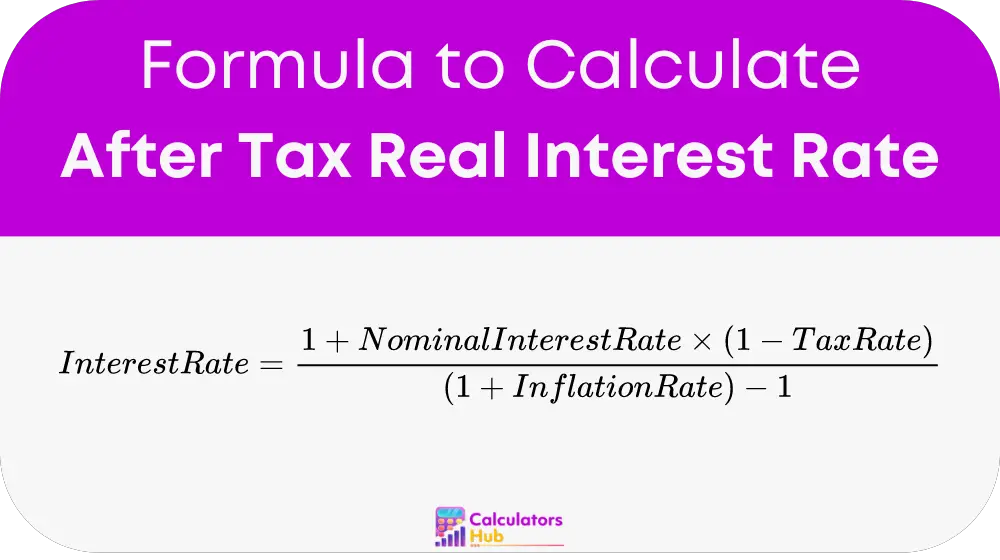The After Tax Real Interest Rate Calculator is a tool designed to help investors understand the true yield of their investments after adjusting for the effects of taxes and inflation. This rate is vital for comparing different investment options on a level playing field, enabling users to make more informed decisions that reflect the actual increase in purchasing power their investments will provide.
Formula of After Tax Real Interest Rate Calculator
To calculate the after-tax real interest rate, we use the following formula:

Nominal Interest Rate: This is the interest rate quoted by financial institutions, not accounting for inflation or taxes.
Tax Rate: This represents the portion of the interest earned that must be paid to the government as tax.
Inflation Rate: Inflation measures how much the general prices of goods and services increase over time, reducing the purchasing power of money.
Practical Usage
Using the After Tax Real Interest Rate Calculator is straightforward. Below is a table of common terms you might encounter and their implications for your calculations:
| Term | Definition |
|---|---|
| Nominal Rate | The baseline interest rate of an asset |
| Tax Rate | The percentage of your interest taxed |
| Inflation Rate | Annual increase in prices |
This table should serve as a quick reference to help users understand the basic inputs needed for the calculator.
Example of After Tax Real Interest Rate Calculator
Let’s consider an example where the nominal interest rate is 5%, the tax rate is 30%, and the inflation rate is 2%. Plugging these values into our formula provides:
After-Tax Real Interest Rate = (1 + 0.05 * (1 – 0.30)) / (1 + 0.02) – 1 = 0.0214 or 2.14%
This means, after adjusting for taxes and inflation, the real interest rate is 2.14%.
Most Common FAQs
A: Nominal interest rates are the state rates without adjustments for inflation or taxes, whereas real interest rates are adjust to reflect the purchasing power of money over time.
A: Taxes reduce the amount of interest you effectively earn, lowering the real rate of return on your investments.
A: Inflation can erode the value of your earnings. By considering inflation, you can understand how much your investment will truly grow in terms of purchasing power.